The Ultimate Blueprint for Long-Term Travel Success: Mastering Global Adventures
Long-term travel is not merely about hopping from one country to another; it is about immersing yourself in cultures, overcoming challenges, building true global awareness, and returning home a changed person. Whether you’re a gap year graduate, a remote worker, or a mid-life explorer, this blueprint guides you through every phase of the ultimate travel lifestyle.
Long-term travel has transformed from a distant dream into an achievable reality for many adventurous souls. Whether you’re planning a six-month sabbatical, a year-long world tour, or an open-ended journey, extended travel offers unique opportunities to immerse yourself in different cultures, create lasting memories, and experience personal growth.
The rise of remote work, digital nomad visas, and flexible lifestyle choices has made long-term travel increasingly accessible. You’ll find travelers of all ages and backgrounds exploring the world for extended periods, from fresh graduates seeking life experiences to professionals taking career breaks.
Table of Contents
- Why Long-Term Travel? The Life-Changing Benefits
- Planning Your Dream Itinerary: Research, Routes & Resources
- Budgeting Wisely for Extended Adventures
- Travel Health, Wellness, and Safety
- Smart & Minimalist Packing for Every Climate
- Pre-Departure Logistics & Life Back Home
- Getting Around: Transportation Mastery
- Finding Your Ideal Accommodation
- Work, Career Breaks, and Remote Opportunities
- Cultural Immersion: Truly Connecting Abroad
- Handling Loneliness, Burnout, and Mental Health
- Sustainable, Responsible, and Ethical Travel
- FAQs: Answering Your Biggest Questions
- Conclusion: Are You Ready?
1. Why Long-Term Travel? The Life-Changing Benefits
If you’ve ever found yourself daydreaming of open-ended journeys—waking up in a new city, learning a new language, or making friends from all walks of life—you already understand the intoxicating allure of long-term travel. But why do so many people make the leap? What are the real, lasting payoffs—beyond Instagram photos and passport stamps? Personal Growth, Confidence, and Worldview
Long-term travel pushes you outside your comfort zone—over and over.
- You’ll adapt to new languages, customs, and foods.
- Real independence: Navigating foreign train stations, negotiating with vendors, managing budgets and visas solo.
- Problem-solving in the real world: missed buses, border hiccups, medical issues abroad.
- Result: Unmatched confidence and resourcefulness you’ll carry for life. “Travel is the enemy of prejudice, bigotry, and narrow-mindedness.” — Mark Twain
Deeper Global Perspective
- Long-term travel isn’t a vacation; it’s full immersion. You’ll see not just beaches and museums, but everyday life—work commutes, local politics, neighborhood festivals, family rituals.
- You’ll understand globalization, privilege, economic differences, and shared humanity in a way no classroom can teach.
- Lifelong friendships from diverse backgrounds.
Adventure and Novelty
- Every week brings new challenges: canyoneering in the Philippines, wine-harvesting in France, riding local trains in India, learning tango in Buenos Aires.
- Unscripted adventures: roadtripping with friends you met in a hostel last night, being invited to a stranger’s wedding, finding life-changing ideas in a café in Athens.
Flexibility and Reinvention
- Remote work & digital nomadism lets you build a mobile career or business.
- Take a sabbatical, career break, or “mini-retirement” to recharge and rethink your trajectory.
- Families worldschool, couples reinvent their relationship by adventuring side-by-side.
Health and Life Enjoyment
- New foods, new outdoor activities, more time in nature, more walking, less routine stress.
- Constant learning, which science shows keeps you mentally agile.
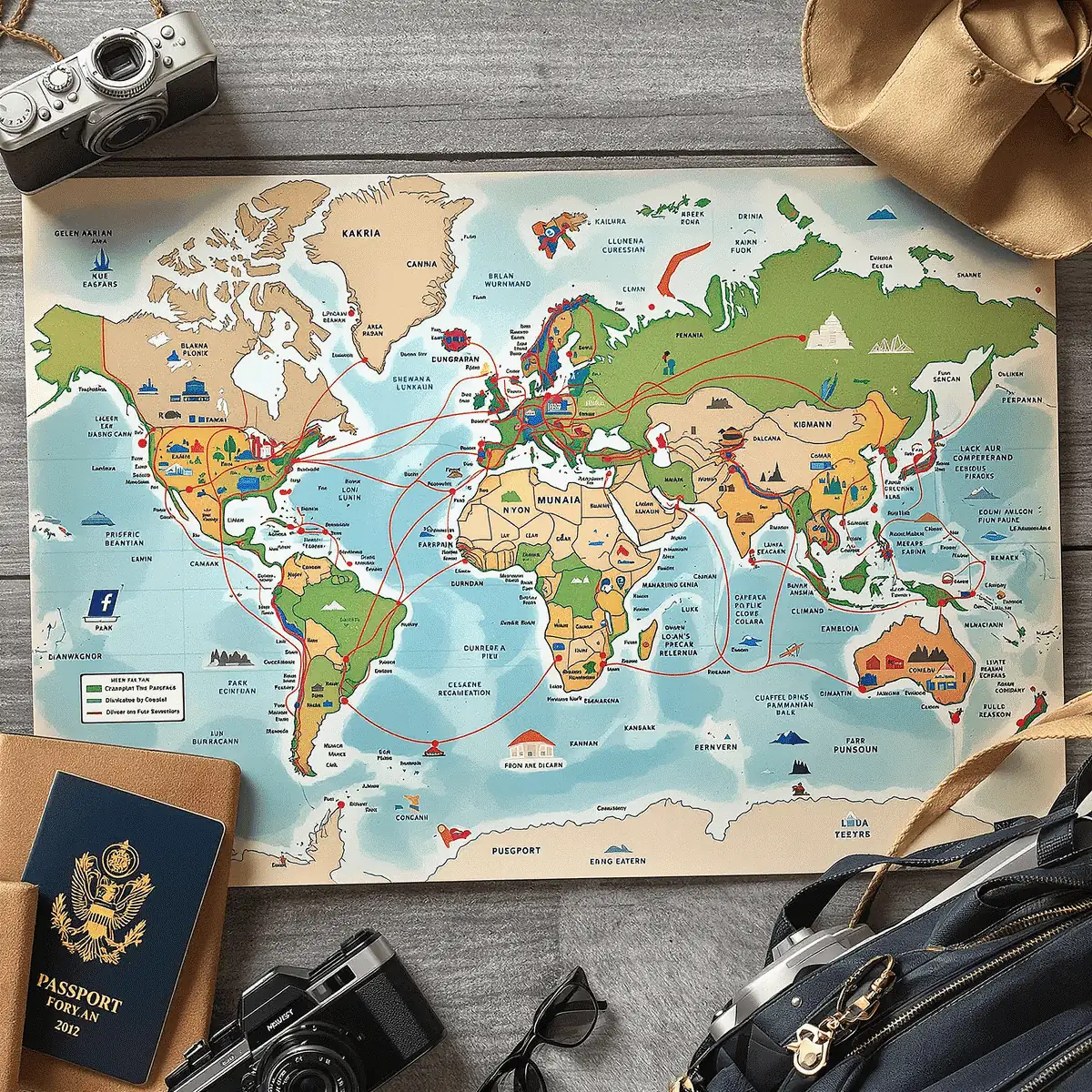
2. Planning Your Dream Itinerary: Research, Routes & Resources
Dream Big, Plan Smart What Makes an Itinerary “Great”? A haphazard list of cities leads to expensive mistakes (and burnout). A great itinerary weaves logistical sense, local rhythms, and personal passion—while leaving space for spontaneity.
Key Considerations:
- Visas & legal stays: Know where you’re allowed, for how long, and with what paperwork. Schengen rules for Europe, e-Visas for Asia, working holiday programs in Australia/NZ… know before you fly!
- Weather: Don’t land in Southeast Asia during monsoon, or ski season in July (unless you want to).
- Festivals/work schedules: Arriving in Rio for Carnival, India for Holi, or Japan for cherry blossoms is next-level—but budget and book early!
- Travel style: Mix cities and nature, museums and treks, beach weeks and urban life.
Research Tactics
- Guidebooks & Blogs: Lonely Planet, Nomadic Matt, The Blonde Abroad, Roads & Kingdoms.
- Social Media: Search Instagram locations/tags for up-to-date visuals. TikTok for video overviews.
- Forums: Lonely Planet Thorn Tree, Reddit r/travel, country-specific Facebook groups.
- Official Sites: Tourism boards, embassy travel advisories, event calendars.
- Podcasts: Armchair Explorer, Zero to Travel, Indie Travel Podcast.
- YouTube: Channels like Kara & Nate, Lost LeBlanc, Eva zu Beck for destination vlogs and logistics.
Example: Building a Multi-Country Itinerary
Say you plan to start in Portugal (1 month), cross Spain, then onto Morocco, Egypt, and Thailand.
- Visas: Portugal & Spain = Schengen 90 days; Morocco requires a separate visa; Egypt has e-visa; Thailand = 30 days (extendable).
- Weather: Portugal spring (nice), Egypt summer (very hot), Thailand rainy season (avoid Sep/Oct).
- Logistics: Cheap flights from Europe to North Africa; open-jaw ticket into Lisbon, out of Bangkok saves money.
Action step:
Create a spreadsheet to compare visa dates, flight prices, sim card availability, currencies, weather averages, and big events for each location.
Maximizing Experiences, Minimizing Fatigue
- Plan “anchor points” (major events, must-see cities), fill intermediate legs with slower travel.
- Every 5-7 days, schedule a slower pace/“base” for deeper community connection.
- Build in “wiggle room” for spontaneous new friends and serendipitous opportunities.
Daily/Weekly Itinerary Example
| Day | Location | Activity | Notes |
|---|---|---|---|
| 1-4 | Lisbon | Food tour, historic walks | Learn 'obrigado!' |
| 5-7 | Sintra | Castles, hikes | Book train advance |
| 8-11 | Porto | River cruise, Fado music | Stay in old town |
| ... | ... | ... | ... |
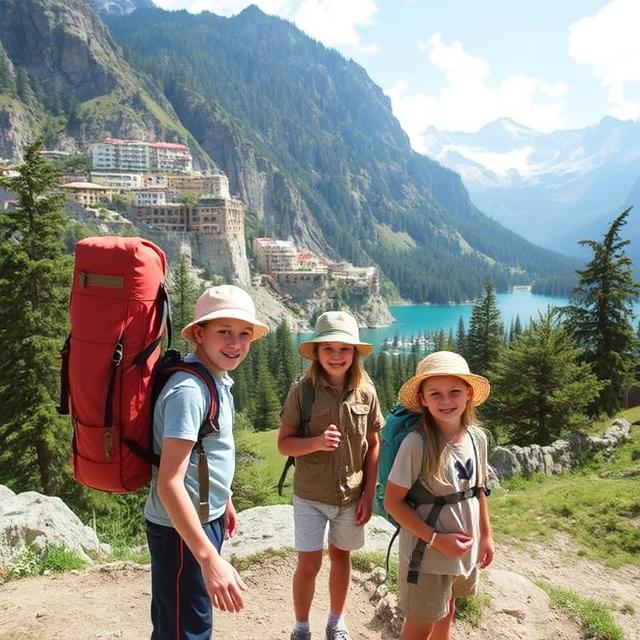
Advanced Planning Tools & Resources
- Google My Maps: Custom maps with saved attractions, restaurants, and hiking trails.
- Rome2Rio: Compare all transport options (bus/train/ferry/plane) globally.
- Skyscanner/Google Flights: Flexible airfare search.
- Duolingo/Memrise: Build essential language skills before you go.
- Splitwise: Track group expenses if traveling with friends.
Budget-Conscious Explorers: Additional Tips
- Use Workaway/WWOOF: Volunteer on farms/hostels for free stays and deep local connections.
- Sign up for newsletters from low-cost airlines for flash deals.
- Explore digital nomad passes (e.g., Selina, Outsite, Outpost) if you plan to work and need coworking.
- Keep an “emergency reserve” for last-second itinerary changes!
3. Budgeting Wisely for Extended Adventures
Creating a thorough, realistic budget isn’t just about staying solvent—it’s about giving yourself the financial freedom to fully enjoy your time abroad. Let’s break down the art of travel budgeting:
Why Budgeting Is Essential
Travel, especially over many months, often reveals hidden costs that can derail even the most optimistic adventurer. A clear budget…
- Reduces stress: Focus on new experiences, not your draining bank account.
- Enables flexibility: Know when (and where) you can splurge or scale back.
- Prevents cut-short trips: Avoid running out of money in a new country!
Budgeting Step By Step
Step 1: Figure Out Your Non-Negotiable Monthly Expenses
- Accommodation: Hostel dorms, apartments, house-sitting, guest houses
- Transportation: Intercity and local travel (buses, trains, rideshares, flights)
- Food: Groceries, street food, restaurants, snacks, emergency rations
- Activities: Tours, entrance fees, guided excursions, nightlife Step 2: Add the “Long-Trip Extras”
- Insurance: Health, accident, theft, trip interruption
- Visas and permits: Application and extension fees
- Communication: Local SIM cards, international data plans, eSIMs
- Medical: Vaccines, travel clinics, prescription refills
- Emergencies: Last-minute flights, hospital visits, gear replacements
- Surprises: Gifts, celebrations, “can’t-miss” experiences
Percentages (Pro Guidance)
- Accommodation: 30–50%
- Transport: 10–20%
- Daily Living (Food, Fun): 20–35%
- Emergency/Insurance: 10–20%
Budgeting Tools for Travelers
- Trail Wallet: Track expenses offline and by category.
- TravelSpend: Plan and analyze spending visually.
- Splitwise: Great for group travel, tracks IOUs.
- Excel/Google Sheets: Build fully customizable, shareable budgets.
- XE Currency: Real-time exchange/conversion rates.
Pro Tips to Maximize Your Cash
- Book monthly stays: Get big discounts on Airbnb and local rentals.
- Use night buses/trains: Save a night’s accommodation + see more.
- Eat local: Street food and markets are cheaper (and tastier) than tourist restaurants.
- Travel slow: Fewer moves = lower costs.
- Loyalty programs: Hotels/airlines/transport passes add up over time.
- Couchsurf: Great for building connections and saving money.
- Set daily/weekly spending limits: Build a buffer for emergencies.
Smart Payment & Safety
- Prepaid & international bank cards: Wise, Revolut, Monzo, N26
- Hide an emergency backup card/cash separately
- Alert your bank: Avoid fraud alarms locking you out.
- Keep digital + physical copies of all cards
Example: $1,500/month Long-Term Southeast Asia Budget
| Expense Type | Estimated Cost (USD) |
|---|---|
| Accommodation | $450 |
| Food | $300 |
| Transport | $200 |
| Activities | $150 |
| Insurance | $80 |
| Emergency | $150 |
| Phone/Data | $30 |
| Visas/Docs | $40 |
| Total | $1400 |
4. Travel Health, Wellness, and Safety
Pre-Departure Essentials
Checklist:
- Schedule a full physical & dental check-up (ideally 2 months ahead).
- Get recommended/required vaccines (consult country-specific CDC/WHO lists).
- Stock up on prescription and essential medications with a written note from your doctor.
- Buy comprehensive travel insurance (medical + evacuation + theft is non-negotiable).
Digital prep:
- Email yourself digital copies of insurance, passport, key health records, and prescriptions.
- Research local clinics, pharmacies, and emergency contacts for every country on your itinerary.
Building a Travel Medical Kit
You don’t want to hunt for supplies in a midnight emergency. Include:
- Prescription meds (and photos of prescription labels)
- Ibuprofen/paracetamol (pain and fever)
- Diarrhea medicine (loperamide/Imodium)
- Oral rehydration salts (for dehydration)
- Antihistamines (allergies, bug stings)
- Bandaids, wound cleaning, tweezers
- Motion sickness tablets
- Sunscreen and insect repellent (DEET or picaridin)
Everyday Safety
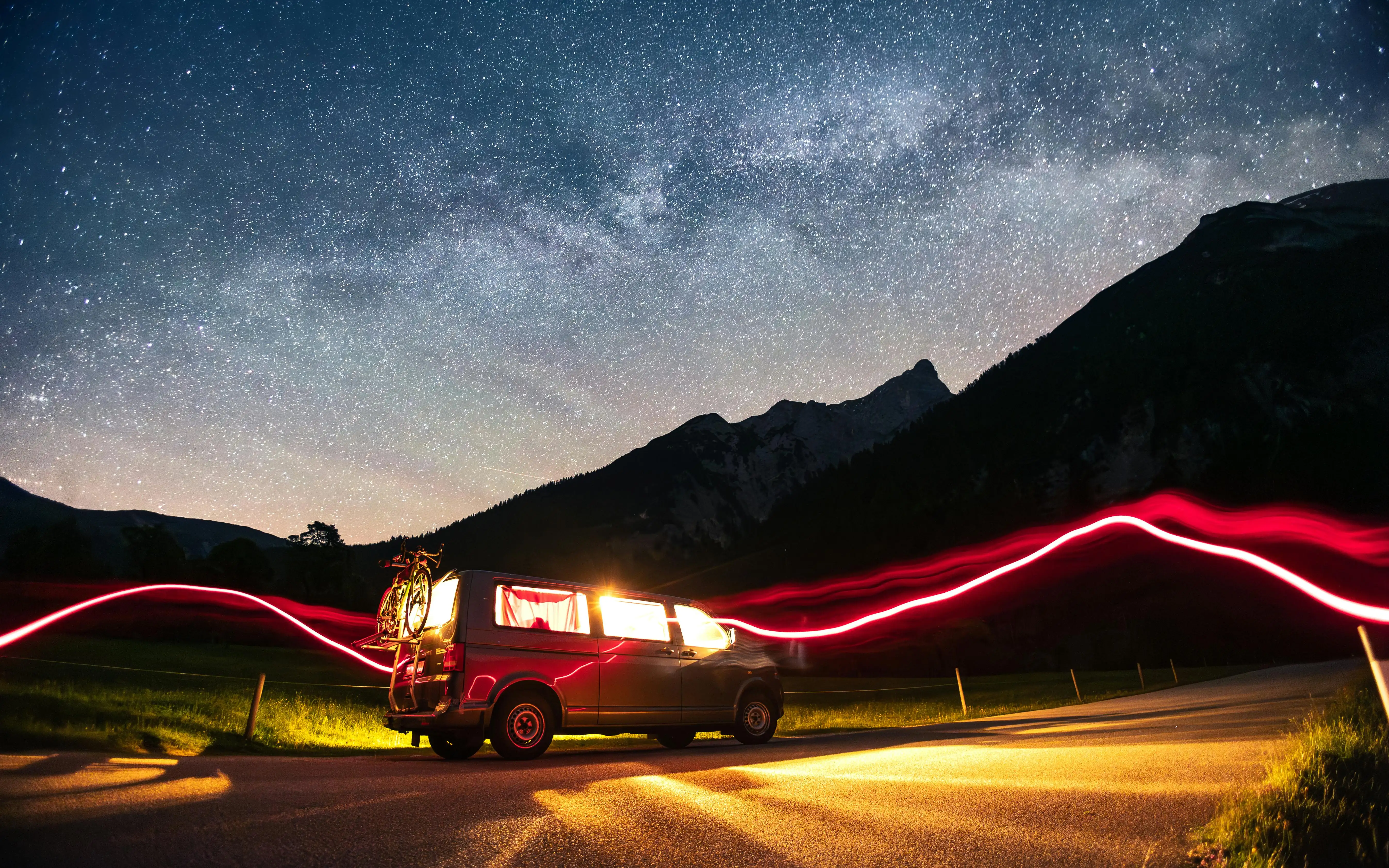
Personal Security:
- Register your trip with your embassy (especially in high-risk countries).
- Use money belts, slash-proof daypacks, and avoid showing valuables in public.
- Don’t keep all cash/cards in one place.
- Always trust your instincts! If something feels off, leave.
Local Health:
- Use bottled/filtered water unless sure of tap quality.
- Eat where locals eat; busy = fresher food.
- Wash hands religiously (carry sanitizer).
Insurance Must-Haves
- Medical: Emergency care, evacuation, prescription coverage
- Trip Interruption: Illness, family emergency, travel changes
- Theft/Loss: Electronics, baggage loss, passport replacement
- Adventure Sports: (Optional) if you’ll be skiing, diving, trekking, etc.
Recommended insurers: World Nomads, SafetyWing, Allianz, IMG Global, InsureMyTrip
5. Packing Smartly
Long-term travelers become experts at packing light—and smart. Here’s how to do it:
Luggage & Organization
- Backpack (35–45L): Mobility is freedom. Avoid checked bags where possible.
- Packing cubes: Keep clean/dirty clothes separate; easy unpacking.
- Daypack/foldable tote: For sightseeing, groceries, or carry-on overflow.
- Compression bag: For jackets/winter gear; saves space.
Clothing: Versatility > Quantity
- 4-5 t-shirts/tops (quick-dry, neutral colors)
- 2 long-sleeve shirts (sun/cold coverage)
- 2-3 shorts/skirts
- 2 pairs of long pants (jeans, travel pants, leggings)
- 1-2 dresses (if desired)
- Light rain jacket or shell
- 5–7 pairs of underwear/socks (quick-dry > cotton)
- 1 swimsuit, 1 sleepwear
- Footwear: sturdy walking shoes, sandals/flip-flops, optional nicer shoes for cities
- Hat, sunglasses, scarf (for style & sun protection)
Essential Gear & Gadgets
- Universal charger/adapter
- Power bank (at least 10,000 mAh)
- Unlocked phone with eSIM/SIM capability
- Reusable water bottle
- Microfiber towel
- Basic first-aid supplies
- Headlamp/flashlight
- Copies of crucial documents
- Travel laundry kit: detergent, line, sink stopper
Packing hack:
Follow the “5, 4, 3, 2, 1 rule”: 5 tops, 4 bottoms, 3 layers, 2 shoes, 1 hat. Everything should mix-and-match!
6. Pre-Departure Logistics & Life Back Home
Before you hit the road for months (or years), you’ll want to tie up loose ends at home so you can travel worry-free. This isn’t just about convenience, it’s essential for peace of mind and uninterrupted travel.
Organize Living Arrangements
- If renting:
- End your lease, sublet (with landlord’s approval), or arrange for someone to house-sit.
- Store valuables with trusted friends or in a secure storage facility.
- If owned property:
- Secure your home, set up automated bills, establish an emergency contact for your property.
- Mail management:
- Set up mail forwarding or hire a mail scanning service.
- Ask a friend or relative to check your mail and home periodically.
Document Checklist
- Passport:
- Ensure at least 6 months validity beyond your planned return date.
- Renew if necessary.
- Visas:
- Apply well in advance; check for e-visa or visa-on-arrival options.
- Backup copies:
- Scan and email yourself digital copies of your passport, visas, travel insurance, driver’s license, vaccination records, and credit/debit cards.
- Store paper copies in a separate bag.
Financial Prep
- Bank notifications:
- Alert your banks to international travel plans to avoid locked cards.
- Automate payments:
- Set up automated online payments for rent, loans, insurance, and subscriptions.
- Consolidate accounts:
- Close unneeded bank or credit accounts to prevent fraud and minimize complexity.
- Power of attorney:
- Assign someone trustworthy to handle your affairs if you’ll be away for a very long time.
- Exchange rates:
- Order foreign currency, especially for your first country, or use a travel card.
- Cancel non-essential subscriptions:
- Gym, streaming services, magazines—save every cent!
Communication Setup
- SIM card/eSIM:
- Buy a global SIM, eSIM, or research your arrival country’s best local provider.
- Messaging apps:
- Install WhatsApp, Telegram, Signal, or Viber for global communication.
- Set up VPN:
- Access secure networks, bypass geo-restrictions, protect against public WiFi risks.
- Cloud backup:
- Sync photos, documents, and contacts to Google Drive, Dropbox, or iCloud.
Checklist Before Departure
- Stop deliveries (milk, newspaper, etc.)
- Clean fridge and home—returning to mold is no fun!
- Empty trash, unplug appliances (save on bills/fire risk)
- Set up timers/lights to make home look occupied (for security)
- Share your trip itinerary with trusted friends/family, including key contact numbers
- Pack a “go bag” for emergencies
7. Getting Around: Transportation Mastery
Navigating transport in foreign lands is both an art and a science. The right choices will save you money, boost your confidence, and help you see the world like a local.
General Principles
- Prioritize safety, reliability, and cost-effectiveness.
- Embrace slow travel.
- Overland routes (bus, train) are cheaper, greener, and let you see more.
- Don’t try to “see it all”—choose meaningful stops.
- Use modern tech tools.
- Apps like Google Maps, Maps.me, CityMapper, Rome2Rio, Omio.
Booking & Comparing Options
Planes
- Book in advance for intercontinental and high-traffic routes.
- Use flexible date searches (Google Flights, Skyscanner, Momondo) to find deals.
- Budget airlines:
- Ryanair, AirAsia, EasyJet, Jetstar, Cebu Pacific, Wizz Air.
- Watch for hidden luggage & seat fee traps.
- Round-the-World tickets:
- Consider if planning a truly global loop—can save money on multi-segment flights.
Trains
- Scenic, safe, and often social.
- In Europe, consider Eurail or Interrail passes for unlimited train travel.
- Japan Rail Pass: A must for long-term travel in Japan.
- Always check for seat reservations (some high-speed trains require them).
Buses
- Cheapest long-distance overland option almost everywhere.
- Sleeper buses (Asia, South America) combine transit with a place to sleep.
- Book via local stations, Busbud, or directly through operators’ apps.
Rideshare & Car Rentals
- Use BlaBlaCar (Europe), carpooling apps, or local ride-hailing services.
- International Driving Permit (IDP) may be required—get it before you go.
- Check local insurance, speed limits, and traffic laws.
Ferries and Boats
- Ferries are essential in island regions (Greece, Indonesia, New Zealand).
- Always check the weather forecast before booking.
Intra-city Transportation
- Metro/subway:
- Buy city travel cards (Oyster in London, Suica in Tokyo, MetroCard in NYC).
- Buses/trams:
- Google Maps and CityMapper show real-time routes and schedules.
- Taxis/rideshare:
- Uber/Grab/Bolt/Lyft are safe in most major cities.
- ALWAYS confirm prices or use meters to avoid tourist scams.
Safety and Smart Tips
- Download ALL relevant transport apps before arriving—many require a local number or WiFi to register.
- Map routes offline (Google Maps Offline or Maps.me).
- Avoid taking unmarked taxis—use official cabs or rideshares.
- Lock valuables and split cash/cards in separate places when in transit.
- Overnight travel? Secure backpack to yourself and keep essentials under your seat or as a pillow.
- For long train or bus rides, pack snacks, water, TP/wipes, power bank, and entertainment.
8. Finding Your Ideal Accommodation
Where you stay can shape your daily experience, your social life, and even your sense of security abroad.
Accommodation Options for Long-Term Travelers
- Hostels:
- Ideal for solo travelers and making friends.
- Common areas, group outings, and kitchens help save money and meet people.
- Check for lockers, reviews of security and cleanliness, and vibe (party, chill, boutique, etc.)
- Guesthouses & Homestays:
- Deeper cultural immersion. Great for learning languages and customs directly from locals.
- Apartments & Rentals:
- Airbnb, Booking.com, or local rental platforms.
- Discounts for monthly stays; cook your own meals, enjoy more privacy.
- Hotels:
- Use hotel aggregator sites for deals and reviews—bonus: strong security and amenities.
- Work Exchanges:
- Platforms like Workaway, WWOOF, HelpX, Worldpackers offer accommodation in exchange for a few hours’ work per day.
- Couchsurfing:
- Free, cultural, and social, but read reviews for safety.
- Co-living & Co-working Spaces:
- Built for digital nomads (Outsite, Selina, Roam). Blend work and play seamlessly.
King Tips & Best Practices
- Use filtered reviews to focus on latest experiences regarding safety, WiFi, and cleanliness.
- Confirm location—close to public transport (> value than city center if on a tight budget).
- Message hosts with clarifying questions before booking.
- For long stays, negotiate a lower rate directly—many hosts prefer guaranteed occupancy over turnover.
- Look for facilities: laundry, kitchen, workspace, 24hr check-in.
- Book “pay at property” or flexible cancellation options where possible.
- Always keep a screenshot of booking confirmations, phone numbers, and directions offline in case you lose connectivity on arrival.
9. Work, Career Breaks, and Remote Opportunities
Today’s technology has redefined what it means to “earn a living.” You can work on the road, choose flexible or short gigs in each country, or take a planned break to recharge.
Remote Work & The Digital Nomad Revolution
- Who’s doing it? Writers, software developers, marketers, consultants, designers, teachers, social media managers, and more.
- How? Broadband, secure cloud tools, collaboration apps (Zoom, Slack, Asana), and digital contracts enable work from anywhere with WiFi.
- Want to try? Search Upwork, Fiverr, Remote.co, We Work Remotely, or LinkedIn for remote gigs.
Local Work & Earning While Abroad
- Seasonal jobs: Hospitality, tourism, agriculture (grape harvests in France, ski resorts in Canada, summer bar work in Australia)
- Hostel and guesthouse staff: Free stay + pocket money
- Teaching English or another language: TEFL-certified? Opportunities in Asia, Europe, LATAM
- Childcare/au pair: Cultural immersion + stipend in Europe, Oceania, USA
Blogging and Passive Income
- Start a travel blog: Share your journey, build a following, monetize via ads, affiliates, or digital products.
- Sell photography/photos to stock sites.
- Create online courses or eBooks.
- Social media influencing: Partnerships, sponsor deals, and affiliate sales.
Work/Life Balance on the Road
- Build routines: Dedicated daily work time, focused sprints, planned rest days.
- Choose accommodation with good WiFi/coworking.
- Invest in noise-canceling headphones, a laptop stand, and a portable mouse.
- Practice deep work—batch tasks, limit distractions, then go explore!
10. Cultural Immersion: Making the World Your Home
Long-term travel isn’t just about movement—it’s about meaningful connection. Real transformation happens when you step beyond tourist checklists and into the heart of local life.
Why Cultural Immersion Matters
- Breaks down stereotypes and builds empathy
- Helps you make real friends—locals and fellow travelers
- Unlocks unique experiences: family festivals, home-cooked meals, meaningful traditions
- Deepens your travel memories, turning places into personal stories
How to Connect With Communities
- Homestays and Guesthouses
- Stay with families to learn daily routines and holiday customs
- Share meals, join chores or celebrations
- Local Classes and Workshops
- Try traditional cooking, handicraft, music, dance, or martial arts classes
- Language exchanges—practice local phrases while making new friends
- Markets and Neighborhood Cafés
- Shop where locals shop, eat where locals eat
- Strike up conversations (even if you only know a few words!)
- Volunteering
- Short-term community projects or long-term teaching and conservation work
- Use trusted platforms; verify projects for ethical standards
Immerse in Traditions
- Attend seasonal festivals or religious ceremonies (always ask for permission/photos)
- Take part in public celebrations, traditional sports, or parades
- Learn to cook a national dish or master a traditional art or craft
Support Local, Travel Ethically
- Dine at family-run restaurants; shop at open-air or farmers markets
- Choose locally-owned hostels and businesses over chains
- Participate in responsible tourism projects—eco tours, wildlife preserves, local craft co-ops
Respect Cultural Norms
- Learn and follow local dress codes and table manners
- Remove shoes when required, cover your head in some places of worship
- Always ask before photographing people (especially children or in spiritual settings)
- Use respectful greetings and polite language whenever possible
11. Handling Loneliness, Burnout, and Mental Health
Even the greatest adventures can have tough days. Feeling tired, lonely, or overwhelmed is very normal on the road—especially when you’re traveling for months.
Recognizing Travel Burnout
- Exhaustion after too many cities or tourist sights in a row
- Boredom with novel experiences; craving routine or familiar foods
- Irritability or impatience in daily travel challenges
- Isolation, sadness, or homesickness
Staying Mentally Healthy on the Road
- Build Routines
- Have a regular day for laundry, admin, or workout
- Use morning rituals: journaling, meditation, neighborhood walks
- Stay Connected
- Schedule calls with family or friends at home
- Join hostel game nights, hiking groups, or expat meetups
- Take Rest Days
- Book an apartment or hostel for a full week to recharge
- Allow yourself “lazy” days—Netflix, reading, favorite comfort food
- Practice Self-Care
- Eat nourishing meals, stay hydrated, and get good sleep (use earplugs/eye mask)
- Exercise—use bodyweight routines, running, yoga apps, or local gyms
- Manage stress—deep breathing, journaling, music, or guided relaxation apps
Finding Support When You Need It
- Don’t hesitate to reach out to a doctor or therapist (many do video consults internationally)
- Use travel forums or digital nomad groups to share challenges and get peer support
- If you’re feeling unsafe or stuck: contact your embassy, local support hotlines, or traveler helplines
12. Sustainable, Responsible, and Ethical Travel
Wandering the globe is a privilege—how you travel matters, both for people and planet.
Principles of Responsible Travel
- Minimize Your Footprint
- Refill water bottles, avoid single-use plastics, recycle where possible
- Use public transport or bike when you can
- Stay on marked trails, never feed or approach wild animals
- Support Local Economies
- Hire local guides, book tours with responsible companies
- Choose locally-crafted souvenirs over mass-produced trinkets
- Give Back Meaningfully
- Volunteer only with reputable, community-requested projects
- Do research: avoid orphanage tourism and unvetted wildlife “rescue centers”
- Respect Nature & Heritage
- Pack out all waste when hiking/camping
- Preserve cultural sites—don’t deface or “take souvenirs” from historical places
13. FAQs (Frequently Asked Questions)
Q: How do I avoid running out of money during long-term travel? A: Start with a realistic monthly budget, track spending daily, take advantage of discounts for longer stays, and always have a backup emergency fund.
Q: Can I travel the world if I only speak English? A: Absolutely! English works in most tourist regions, but learning a few local words shows respect and opens more doors.
Q: Do I need travel insurance? A: Yes, you do. Even if you’re healthy and careful, accidents and theft happen. Proper insurance can save thousands and stress.
Q: What’s the best way to meet other travelers or locals? A: Stay in hostels or guesthouses, join free city tours, use Meetup.com or Couchsurfing events, and participate in group classes/excursions.
Q: How do I work legally while traveling abroad? A: Research “digital nomad visas”, working holiday visas, or freelance visas for your destinations. Never overstay or work illegally.
14. Conclusion: Your Long-Term Travel Journey Starts Now
Long-term travel is about more than passport stamps—it’s about transformation. The stories you’ll collect, the friendships you’ll make, and the lessons you’ll learn will shape your identity for a lifetime. Don’t wait for the perfect moment. Start planning, dreaming, and investing in experiences today. Your adventure—and a new you—is just a single “book now” button away. —
Did you find this guide helpful?
Share with a travel-loving friend, post your own tips in the comments, or start mapping your big trip now.
Keywords:
long-term travel, digital nomad, cultural immersion, budget travel, travel wellness, remote work, travel packing, sustainable travel, adventure tips, global exploration


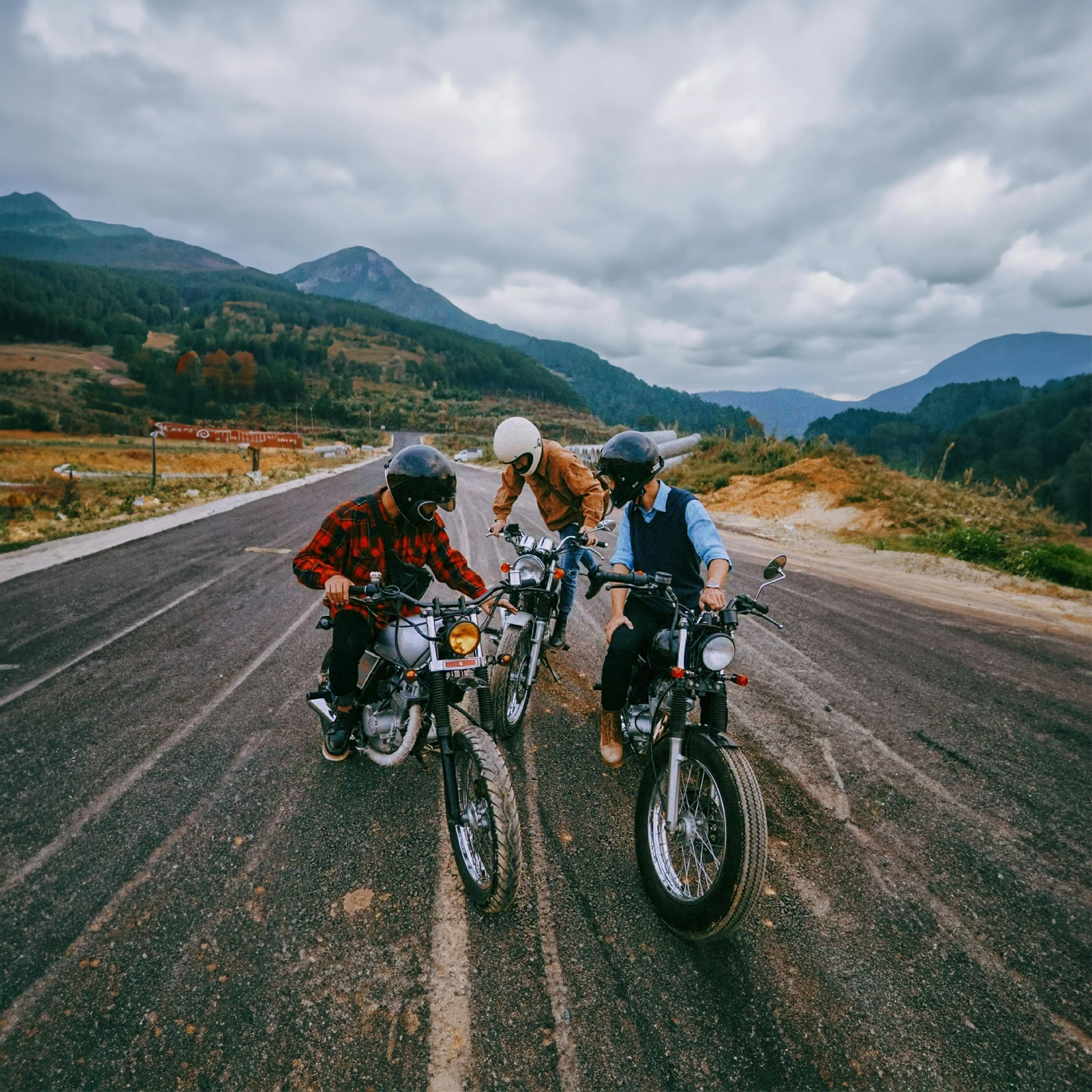

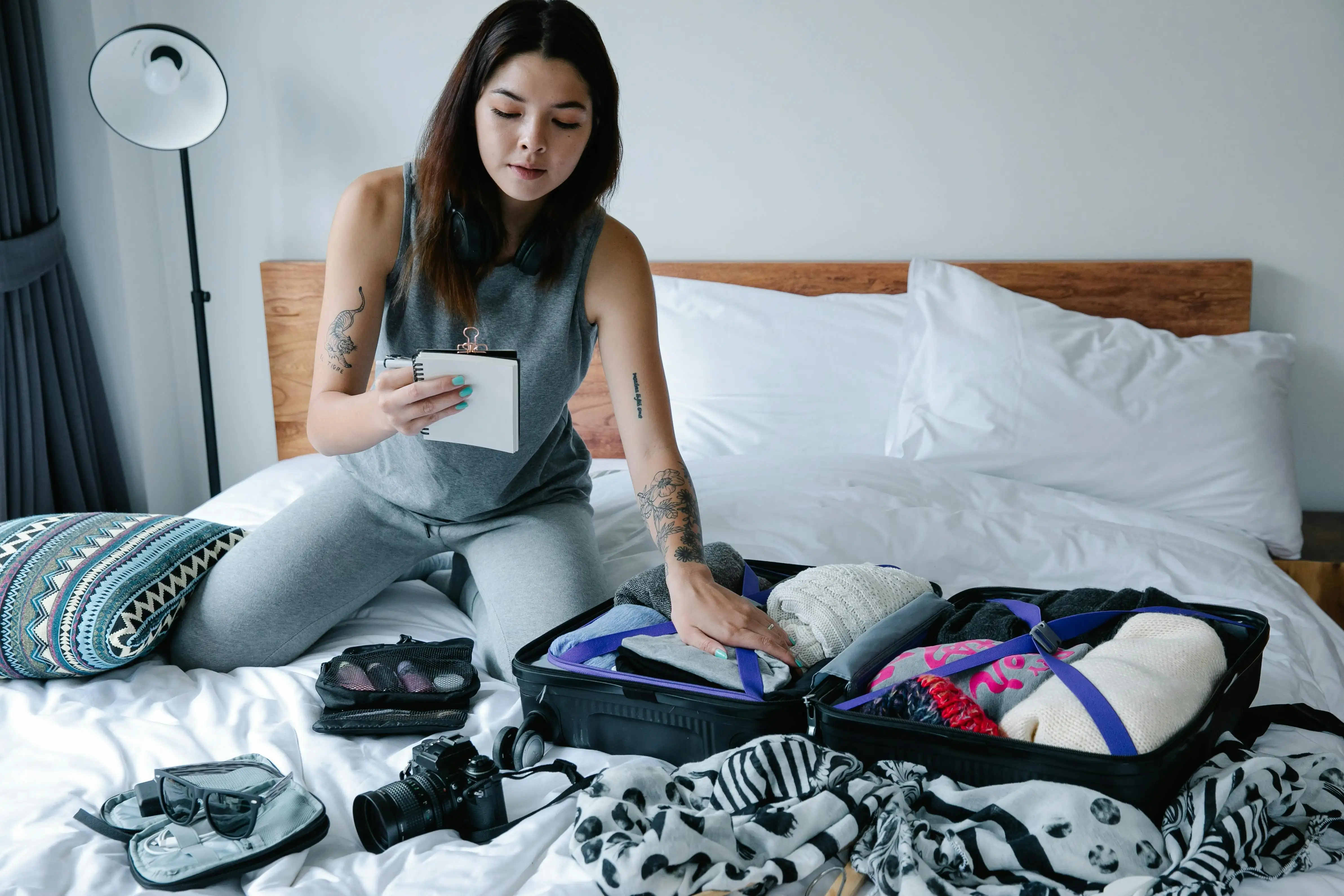
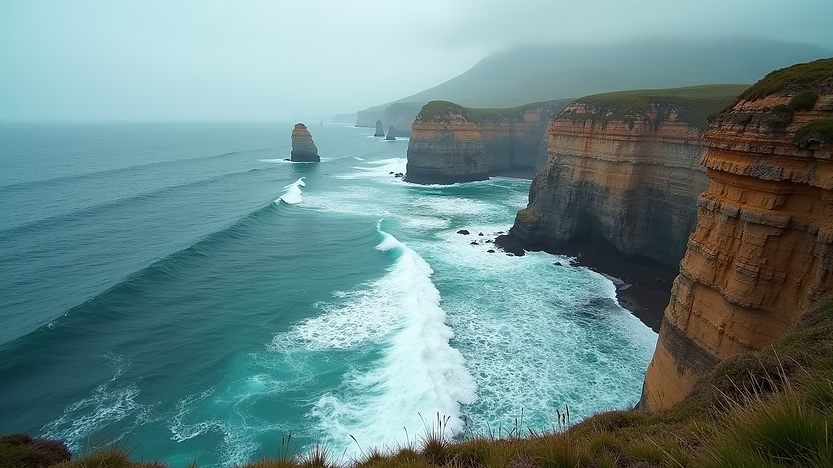

Comments
Micle harison
June 7, 2019This post really got me thinking! The way you’ve explained it feels both insightful and refreshing. I love how you’ve blended practical ideas with such a unique perspective—it’s the kind of content that stays in your mind long after reading.
John Doe
June 7, 2019Reading this felt like having coffee with a really wise friend—uplifting, thought-provoking, and just the right touch of inspiration. Loved it!